On their third try, Guinness brewmaster Joe Gruss says, they “got it right†and now Guinness is in production on the first in their Discovery Series: Guinness Blonde American Lager. “Blonde†because of the golden color from the Mt. Hood and their trademarked Mosaic malts. “American†because…yes, it’s produced in the US, specifically in Pennsylvania. 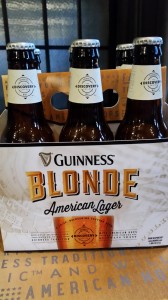
This golden amber beverage has a biscuity aroma, with light maltiness up front, some sweetness throughout, a softly bitter finish and distinctive hop flavor and a pleasant citrus tone that keeps it fresh. It pairs beautifully with buttery foods. Like the creamy, white chowder and crusted Faroe Island salmon dishes we sampled at the recent launch party at Bostonia Public House.
Why is Guinness producing this new beverage? The company is “embracing our traditions and taking off from there – we’re not bound by our traditions,†explains Ruairi Twomey, Marketing VP at Diageo Guinness USA. “We have a lot of young master brewers who want to try new things, and we want them to.†After “plenty of failures†says Twomey, they are already testing a brew (possibly involving nitro) that is intended to be second in the Discovery series. This is a series of innovative beverages they plan to produce for some time, to expand the Guinness line.
They are also initiating a single-batch Signature Series from Dublin, which will be limited production, about 80,000 bottles in strict allocation: the first will be the “1759†which is an amber ale recipe with peated whiskey malt. Both this and the Blonde American Lager will be available in the US from early October. Surprising to me, the pricing on both is slated to be the same as “regular†Guinness. Cans as well as bottles are on the horizon
Blog
3 Ways to Extend Summer in your Glass: Part 2, the Cocktail
When the warmth of the sun banishes autumn’s cool air, and the evening is just beginning, here is the second of three suggestions on what to pour into your glass to extend the feel of summer.
The day I got a bottle of G’Vine Floraison gin I took it to a cocktail party and my friend Marti was already there using her own bottle to make French 75s – way to go, Marti!
This is a lighter gin, tending toward complex and floral, and it comes from France’s Cognac region.
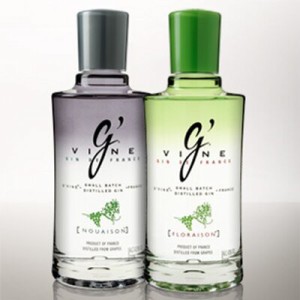 G’Vine is made with the same grapes used in cognac – as well as a distillation of the grape flowers, and other botanicals like coriander, cassia bark (aka cinnamon), peppery cubeb berries, green cardamom, licorice, ginger, nutmeg , lime and a bit of the classic juniper for flavoring, too.
G’Vine is made with the same grapes used in cognac – as well as a distillation of the grape flowers, and other botanicals like coriander, cassia bark (aka cinnamon), peppery cubeb berries, green cardamom, licorice, ginger, nutmeg , lime and a bit of the classic juniper for flavoring, too.
More delicate than many gins, this has aromas evocative of flowers and fruits more than the tanginess usually associated with gin. Simply combine it with lime and tonic for a summery G&T.
3 Ways to Extend Summer in your Glass: Part 1, The Aperitif
While the golden light of autumn slants through the trees, we are reluctant to give up the warmth and relaxation of the summer. So here is the first of three suggestions on what to pour into your glass to extend the feel of summer.
The Golden Aperitif: 2010 Jean de Lillet
 Moving toward golden autumn moments, this is the time to sample the 2010 Jean de Lillet, a slightly more substantial version of the classic French aperitif called Lillet. (These are both Lillet blancs.)
Moving toward golden autumn moments, this is the time to sample the 2010 Jean de Lillet, a slightly more substantial version of the classic French aperitif called Lillet. (These are both Lillet blancs.)
The vintage 2010 Jean de Lillet is richer, with additional complex flavorings from its longer ageing. In fact, I found (in an anecdotal sample) that those of us who don’t drink Lillet very often liked the Jean de Lillet better. In this 2010 vintage, the orange flavor grows, encompassing all aspects of the fruit, from bright juice to aromatic oils. Yet it finishes light and more dryish than supersweet.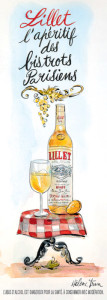
However, at my little tasting, the one long-standing Lillet fan among us stayed true to her original lov, classic Lillet, buoyed by many great memories from France – and I have to respect that.
DOING GOOD: Lillet has just partnered with designer Catherine Malandrino and 100% of the proceeds from the sale of their unique tote bag goes to the non-profit Women Thrive Worldwide “to bring the voice of women around the world directly to decision-makers in Washington, D.C.†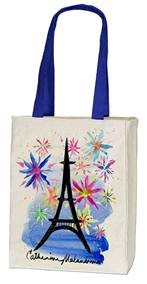
Gin, Tonic, Summer: The Guide
If you’ve spent most of the summer trying to perfect the gin-and-tonic (and many of us have) there are only a couple more weekends to get it right. I suggest getting some immediate expert help, in the form of an entire book devoted to the subject: Gin & Tonic: The Complete Guide for the Perfect Mix by Frederic Du Bois & Isabel Boons.
Want to know the history of the drink? How to move from floral to fruity to spicy in your mix? It’s all in here. In addition to describing just about every gin every tonic available today, the authors include flavor diagrams, lists of top bars, key dates in gin history.
AND the secret list of the herbs and flavorings in each gin!
More Unsatisfactory Chardonnay
So much of the time I’m disappointed – or even appalled – when I taste Chardonnay wines. I’d like to say this time was different. But it wasn’t.
Paul Hobbs’ 2013 Crossbarn Chardonnay (around $26) offers a variety of very separate sensations. Perhaps they will come together in the future, but why not wait until then to release the wine?
After tasting, I studied the label more carefully. The grapes come from respected areas: Sonoma Coast and Sonoma County. Which should have been fine. Only it wasn’t.
Scents of flowers, dark fruit and cardboard wafted through the aroma. A bit of sweetness reared its head on the palate, only to be knocked down by bitterness on the end-palate, with bitter acid in the finish. Food only made it worse.
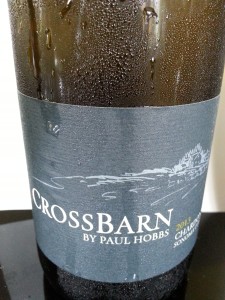 Dismayed, I put the rest of the bottle in the fridge and tried it again before lunch the next day. The random collection of disparate scents and flavors persisted. However, I did fine one food pairing that made it marginally better: whole wheat toast. But how useful is that?
Dismayed, I put the rest of the bottle in the fridge and tried it again before lunch the next day. The random collection of disparate scents and flavors persisted. However, I did fine one food pairing that made it marginally better: whole wheat toast. But how useful is that?
Moving on, I sampled the 2010 Monteverro Chardonnay, IGT Toscana. Flavors and aromas were polarized from toffee-vanilla sweet to a sharpness that suggested the wine was acidified. Nothing good on the palate. And it only got worse with food – both at dinner and the next morning.
Wait, I just checked the price online: it’s almost $100! How could that be?
Did a little research and heard that others have had problems with this chardonnay too. Is this a badly thought-out wine? Or simply an unstabilized wine? Or something else?
Strange, especially because the red Monteverro wines I sampled recently were good: the 2010 Tinata and Terra di Monteverro.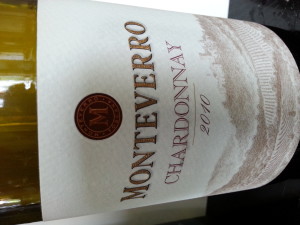
This Mom Needs Help: Wine & Champagne
Becky Sue shares tips, hints and shortcuts to buying, storing and serving wonderful wines and champagnes on “This Mom Needs Help”.
Continue reading